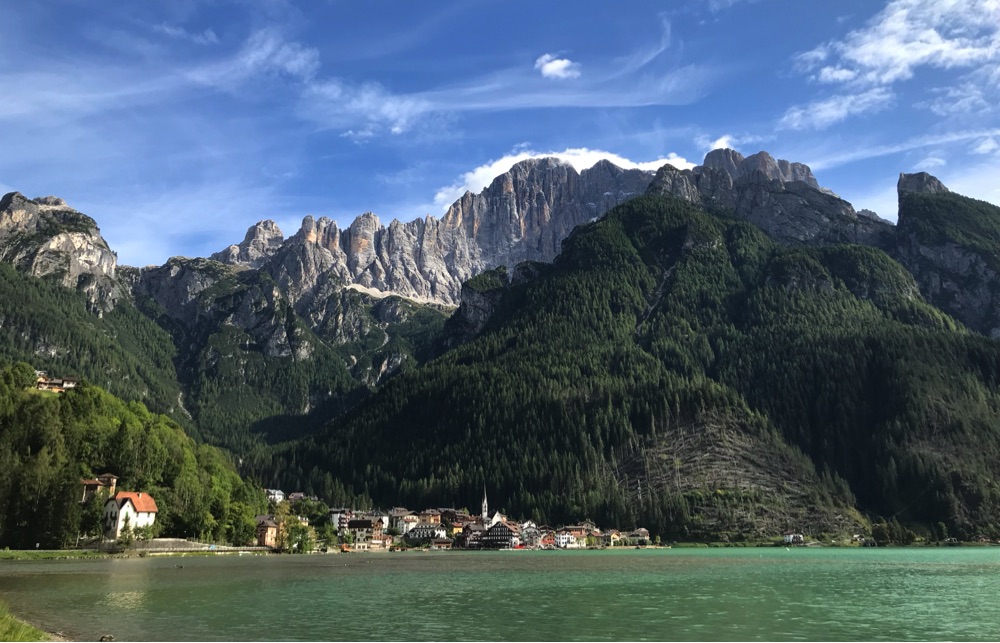THE MOUNTAINS OF VENICE
In Progress!
The Dolomites are the most magical and enchanting mountains in the world. They are haunting and primevil, at times bizarre, eerie, and even disquieting. At dawn and dusk they glow rose, orange, and gold, as if on fire, and look unreal, surreal. They almost look alive (which they were!) They can appear like ruins of mountains...skeletons of mountains...ghosts of mountains. They are bewitching, and I have spent most of my life under their spell, irresistably drawn to them, transfixed and held fast, wanting nothing more than to gaze at them in wonder and awe.
Yet in spite of their fame, there’s a lot of misinformation and confusion about the Dolomites, starting with the simple matter of exactly what and where are they are! Magazine articles, guidebooks, websites, and travel shows are responsible for perpetuating these errors, which are mainly the result of lax journalism, even on the part of Italians themselves!
Is "Dolomites" just another name for the Italian Alps?
No! The Italian Alps extend all across the north of Italy, along its borders with France, Switzerland, Austria, and Slovenia. The Dolomites are but a small section of the Alps, located in the northeast part of the country. Some so-called cycling "tours of the Dolomites" traverse the Stelvio, Mortirolo, and Gavia passes, but none of these passes is even near the Dolomites. You can see this for yourself just by noting the differences in the forms and colors of the mountains.
Then what sets the Dolomites apart from the rest of the Alps?
The Dolomites are known for their striking forms and spectacular coloration. This is the result of their origin (under an ancient lagoon--the Tethys Sea) and resulting chemical composition. Over the course of their 250 million-year history, wind, water, and ice have sculpted them into dagger blades, ruined castle battlements, soaring cathedral spires, organ pipes, jagged fangs, and other fantastic forms (though the author Dino Buzzati asserted that it is wrong to say they resemble any works of humankind (they were here millions of years before us) and look only like their unique, magnificent selves. Their colors change with the path of the sun: purple, silver, gold, terracotta, rose. Enchanted is the word that best describes these mountains. Learn more about their origins here.
Are the Dolomites and "South Tyrol" synonomous?
Absolutely not! Seventy percent of the Dolomite range is located in the province of Belluno, in the Veneto region. The South Tyrol (Süd Tirol/Alto Adige) is synonymous with the autonomous province of Bolzano, which, along with the autonomous province of Trento (the Trentino), comprise the autonomous Trentino-Alto Adige region. Although these two provinces are entirely mountainous, only 10% of the mountains are Dolomites (though they spend a lot on marketing to make you believe otherwise). In contrast, two thirds of Belluno province are covered by Dolomites. There are also Dolomites in the provinces of Udine and Pordenone in the Friuli region. The catchy slogan, Dolomiti, the Mountains of Venice, was in fact created partly to counter the deceptive, dishonest, promotions of the Trentino-Alto Adige region, which has even used images of Belluno's mountains in its ads. Although the proud inhabitants of Belluno province are understandably miffed at having the provenance of their mountains attributed to that distant regional capital on the sea, a meh slogan like Dolomiti, the Mountains of Veneto would not grab anyone's attention. Mountains of Venice, on the other hand is paradoxical and puzzling, and should incite potential visitors to seek an explanation.
But the Dolomites really are closer to Venice than you might think!
Is German the language of the Dolomites?
German is spoken in the province of Bolzano, that is, the Alto Adige/South Tyrol. The languages spoken in the provinces of Trento and Belluno are Italian, Trentino, Bellunese, and Ladino, a Rhaeto-Romance language not of Germanic origin. (It is also spoken in the Val Badia and the Val Gardena in Bolzano province). The Alto Adige, which prefers to be known as South Tyrol, was once part of Austria (until it was unfortunately ceded to Italy after WWI) and does not consider itself Italian, wheras the Trentino and Friuli were once part of the Republic of Venice, hence the appellation Triveneto.


Photo © April Pedersen Santinon
46% Belluno
Alto Adige 24%
Trento 12%














